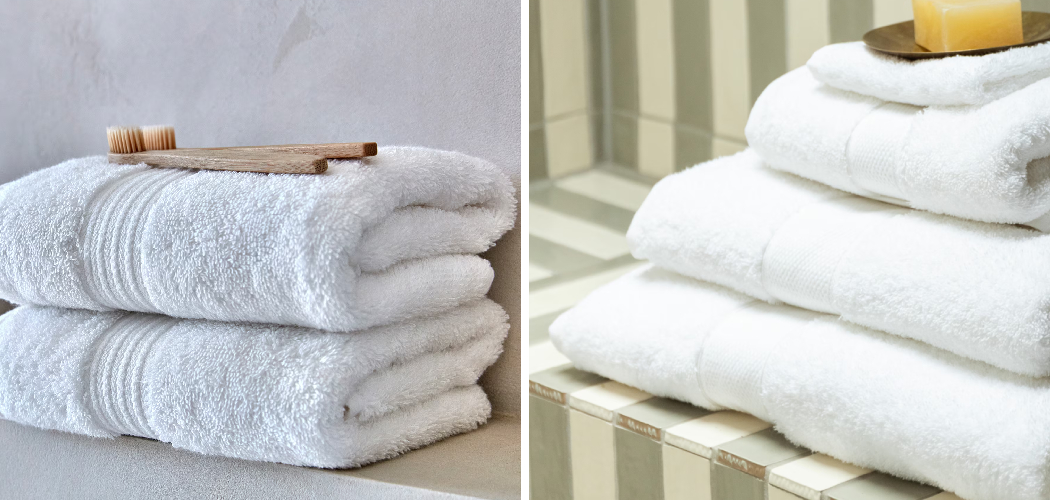Towels are an essential part of our daily routine, providing comfort and practicality in various situations, from drying off after a shower to wiping up spills. However, a common frustration many people encounter is the shedding or linting of towels.
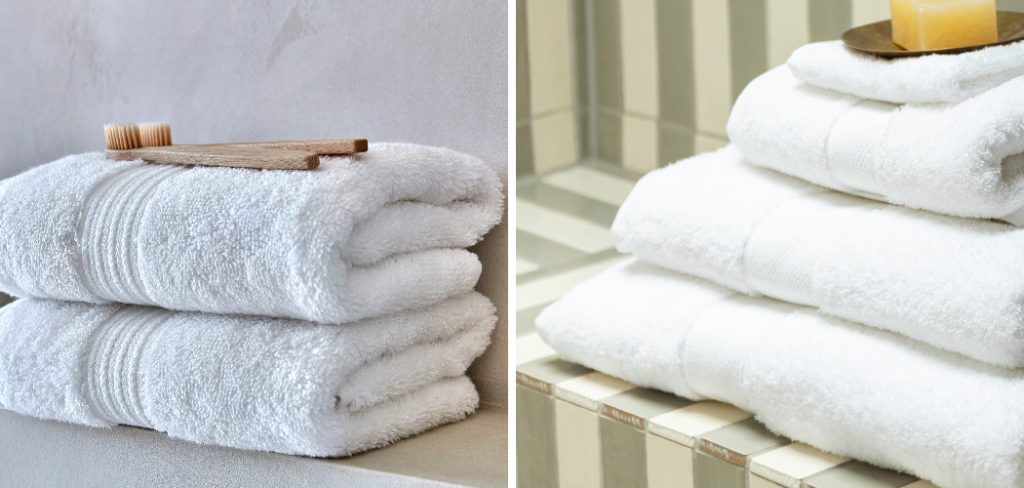
This issue can not only leave unsightly fibers on your body or surfaces but also diminish the towel’s overall effectiveness. In this guide on how to make towels stop shedding, we’ll explore practical steps to help you reduce or eliminate towel shedding, ensuring your towels remain soft, absorbent, and free from annoying lint.
What is Towel Shedding?
Before we dive into the solutions, it’s essential to understand what causes towel shedding in the first place. Towel shedding occurs when loose fibers from the fabric break off and cling to other surfaces or body parts.
This phenomenon is common in new towels that have not yet been washed multiple times, as well as lower quality towels that have a looser weave.
It’s worth noting that towel shedding is not entirely preventable, as it is a natural process for any fabric to lose some fibers over time. However, by following the tips below, you can significantly reduce the amount of lint your towels shed.
Why Do Towels Shed?
There are a few factors that contribute to towel shedding, including:
Poor Quality Fabric:
Lower-quality towels tend to have looser weaves, making them more prone to shedding. These towels are often made with shorter fibers that do not hold together as well.
High Temperature Washing and Drying:
Excessive heat can damage the fibers in your towels, leading to increased shedding. It’s essential to follow the manufacturer’s instructions for washing and drying your towels, which typically recommend using warm or cold water and a low dryer setting.
Overloading the Washer or Dryer:
Stuffing too many towels into one load can put strain on the fabric, causing it to shed more easily.
Now that we understand why towel shedding happens, let’s explore some solutions to help make towels shed less.
Needed Materials
To combat towel shedding effectively, you’ll need a few key materials and supplies. Below is a list of items that will help you in the process:
White Vinegar:
Vinegar helps to break down detergent residues and strengthen the fibers in your towels.

Baking Soda:
This household staple is useful in removing detergent buildup and softening your towels.
Dryer Balls:
These handy little balls help to keep the fabric of your towels fluffy and reduce static cling.
Fabric Softener:
Using a high-quality fabric softener can also help to soften fibers, making them less likely to shed.
7 Simple Step-by-step Guidelines on How to Make Towels Stop Shedding
Step 1: Wash Your Towels Before Use
The first step in reducing towel shedding is to wash your towels before using them for the first time.
New towels often have excess fibers that have not been removed during the manufacturing process, and the initial wash helps to get rid of these loose fibers. To do this, wash your towels separately from other laundry items to prevent lint from transferring.
Use warm water and a small amount of detergent, avoiding fabric softeners and bleach, as these can break down the fibers and cause more shedding. For best results, you may want to repeat this process two or three times before the first use.
Step 2: Use Vinegar or Fabric Softener
Adding a half cup of white vinegar to the rinse cycle can help soften the fibers, preventing them from breaking and shedding.
You can also use a small amount of fabric softener during the wash cycle, which will coat the towel fibers and reduce friction. However, be cautious not to use too much as it can lead to a waxy buildup on your towels.
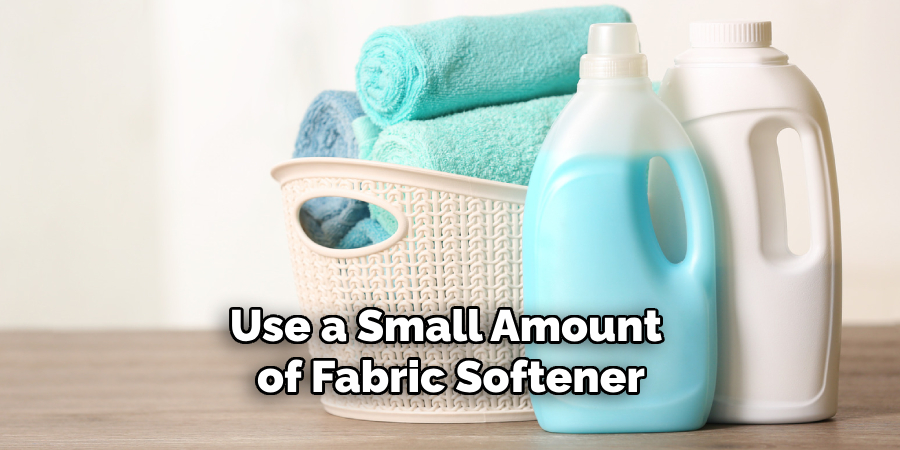
It’s also worth noting that some people find fabric softeners irritating to their skin, so be mindful of this before using it on your towels.
Step 3: Dry Your Towels Correctly
When drying your towels, avoid using high heat settings, as this can damage the fibers and cause more shedding. Instead, opt for low heat or air-drying your towels. It’s essential to remove the towels from the dryer promptly, as leaving them in there for too long can also cause excess shedding.
It’s also helpful to shake out the towels before putting them in the dryer, as this can help loosen any excess lint or fibers.
Step 4: Wash Your Towels Separately
When laundering your towels, it’s best to wash them separately from other laundry items, especially those made with materials that produce a lot of lint, such as flannel or fleece. This will prevent lint transfer and keep your towels looking clean and free from excessive shedding.
It’s also a good idea to wash your towels on their own without overloading the washer, as this can cause strain on the fabric and increase shedding.
Step 5: Avoid Overusing Detergent
Using too much detergent can actually cause more shedding in your towels. Excess soap residue can build up on the fibers, making them stiffer and more prone to breaking off. Follow the recommended amount of detergent according to the load size for best results.
You may also want to consider using a mild laundry detergent specifically designed for delicate fabrics, as this can help protect the fibers and reduce shedding.
Step 6: Trim Loose Threads
Inspect your towels regularly for any loose threads or stray fibers. If you find any, carefully trim them off with a small pair of scissors instead of pulling them.
Pulling on loose threads can further damage the fabric and lead to more shedding. Be thorough in your inspection, checking all edges and corners where loose threads are most likely to appear.
Taking the time to trim these threads helps maintain the structural integrity of the towel and reduces the likelihood of additional fibers coming loose over time.
Step 7: Use Quality Towels
Finally, one of the most effective ways to reduce towel shedding is by investing in higher quality towels. Look for towels made with longer fibers and a tighter weave, as these are less likely to shed compared to lower quality options.
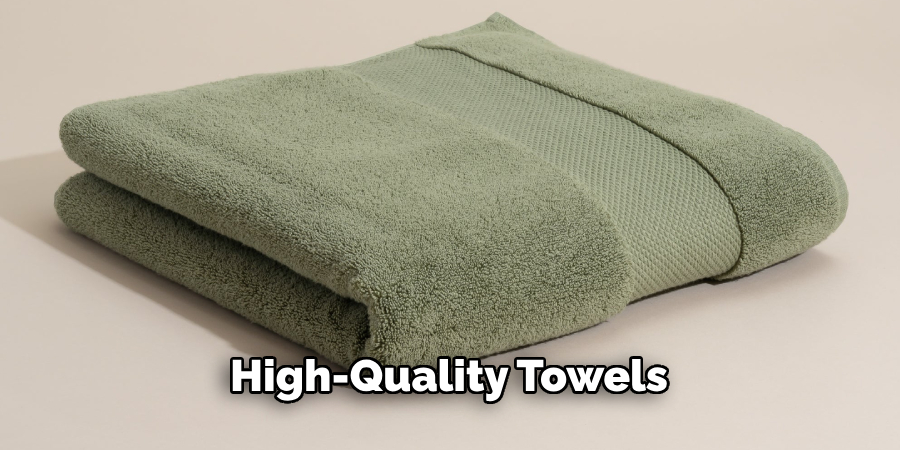
While they may be more expensive upfront, high-quality towels will last longer and require less maintenance in the long run.
Following these simple steps on how to make towels stop shedding can greatly reduce the amount of lint and fibers your towels shed, leaving them looking and feeling soft, fluffy, and clean.
Remember to be patient when trying out these tips as it may take a few washes before you see a significant difference in shedding. But with the right care, you can enjoy your towels for years to come without worrying about excessive shedding. So go ahead and give those towels some extra TLC – they deserve it!
Tips to Reduce Towel Shedding
Wash and Dry Your Towels Before First Use:
New towels are more likely to shed, so it’s crucial to give them a thorough wash and dry before using them for the first time. This will remove any loose fibers and minimize shedding in the future.
Add Vinegar or Baking Soda to the Wash:
Adding a cup of white vinegar or half a cup of baking soda can help loosen any excess lint on your towels during the wash cycle.
Use Fabric Softener:
Fabric softener can help reduce static and prevent lint from sticking to your towels. However, be sure not to use too much, as this can actually contribute to increased shedding.
Avoid Excessive Heat:
As mentioned earlier, high temperatures can damage the fibers in your towels and increase shedding. It’s best to stick with warm or cold water for washing and a low dryer setting.
Don’t Overload the Washer or Dryer:
Again, overloading your washer or dryer can strain the fabric and cause it to shed more easily. Give your towels enough space to move around freely during the wash and dry cycles.
Use a Lint Roller:
If you still notice some lint on your towels after following the above steps, a lint roller can help remove any remaining fibers. Simply roll it over the towel’s surface to pick up any loose lint.
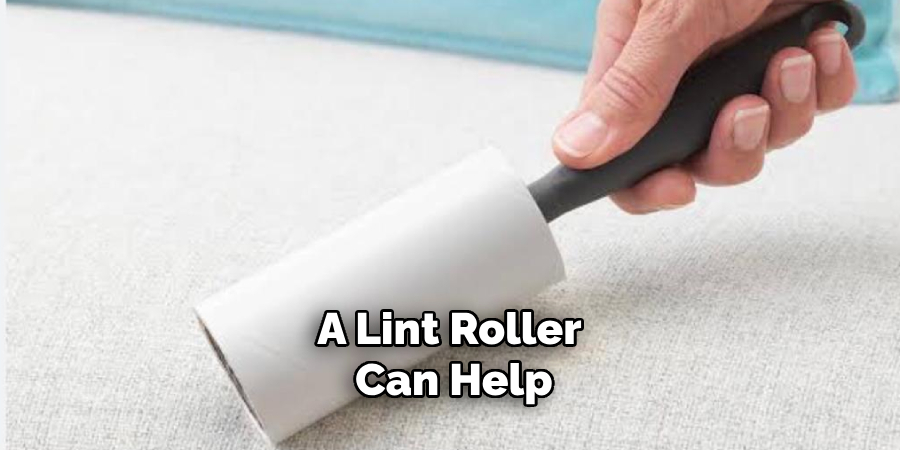
By implementing these tips, you can significantly reduce the shedding of your towels and enjoy soft, absorbent, and lint-free linens for longer.
Conclusion
Understanding the causes and solutions for towel shedding can make a significant difference in the longevity and performance of your towels.
By investing in high-quality towels, practicing proper washing and drying techniques, and utilizing simple household items like vinegar or baking soda, you can minimize lint and extend the life of your linens.
Remember, while some shedding is natural, these steps will help you keep it under control and ensure your towels remain soft, absorbent, and ready to use. With a bit of care and attention, you can enjoy the comfort and convenience of high-performing, virtually lint-free towels every day. Thanks for reading this article on how to make towels stop shedding.

